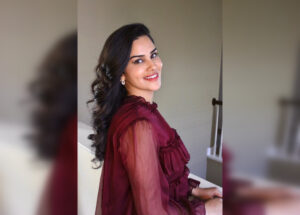Connecting with people, whether it’s through a digital screen or in-person, is a difficult art to master. Using a 3D space (along with all the sights and sounds that it enables) to immerse people and engender a certain feeling or mood is its own art form – called immersive experience design.
Tiana Plotnikova is a young and driven architectural and immersive experience designer who has done an impressive amount of work on projects around the world. Tiana sat down to answer some questions about her personal experiences within the industry, what she’s learnt, and what she predicts for the future of immersive design.
What was your story prior to working on immersive experience projects, and how did you get your start in this field?
I was working in architecture and urban design for quite a while, but I was always interested in applying my tech and design skills in other markets and industries. I think we are living in a day and age where traditional industries are constantly evolving, merging with other industries, and even forming new markets. These are really exciting times! This is one of the reasons why I did a masters in Entrepreneurship and Innovation – to gain a better understanding of how creative businesses emerge and evolve. It ended up perfectly complimenting my bachelor’s degree in architecture, as now I can implement both in my work – develop creative strategies for businesses and doing the design itself.
Can you explain the fundamentals of your work, the utility it has for businesses and what first steps you take when starting a new project?
I am very lucky because the work I do allows me to implement a holistic approach to everything I do. I consult the business (be it based in fashion, medicine or another field), analyse their business strategy, understand what they want to achieve and then develop an alternative strategy – be it a new office location, building a temporary installation for marketing or simply doing rebranding work. My work is usually focused on increasing sales, streamlining inefficient processes and providing artistic direction. If a business does not have a physical presence, I help them to develop a strategy of how to venture out beyond the digital realm if that fits their goals. Currently I am working with an LA based fashion start-up helping them do exactly that. Prior to this project I was working with a medical centre, developing UX design for their new spaces and creating a new marketing campaign. My role can be described as a user-centric designer / business consultant that comes in, looks at your business and finds a way to take it to the next level or push it in a new direction.
Have you found that cultural differences between the countries you’ve worked in have influenced your designs and/or approach to design?
Certainly there are a lot of cultural differences between Asia, Europe and the US that you need to adapt to, but I don’t think that those differences have a great impact on my creative work. My work has always been user-centric. I keep in mind the goals of the project, but I always think about the user, the experience that the person has with the business or a space and always ask myself – what can I do better to make them fall in love with this?
What is your personal favourite work that you’ve done in your portfolio?
My favourite commercial was for Huawei in China. It was a masterplan, so the initial UX strategy was challenging and complex, as the amount of user groups was over a hundred. I had to develop and consider various narratives and timelines that later translated into my final design. My favourite personal project was Pyramiden, the installation where I merged art, architecture and tech – the trio that I am usually most excited about when it comes to my work.
How do you assist businesses and the public sector in developing user experience and design strategies that they can continue using into the future?
The process of work is the same for businesses and the public sector. If it is something as big as a masterplan design (a region of an emerging city or a campus for a business), then I consider a wide variety of factors. I usually do programmatic and quantitative forecasting first – I try to understand how the client sees their project functioning into the future, how it evolves over time, and the number & type of user groups it will cater to. My design tailors to potential opportunities and new users. To be successful, it must be flexible, adaptive and accommodating of future needs.
What are some predictions you have about the field and careers in immersive experience design? What it will look like in 5 years?
I feel that we are living in an era when many industries are merging, transforming and therefore creating new opportunities that we couldn’t even think of. The strongest unification is happening between design, business and tech. The professions are becoming more fluid as they require an increasingly holistic problem-solving approach. Businesses are also trying to hire people from various academic backgrounds to facilitate innovation. We have so much to learn from each other! The medici effect did not happen between people of the same profession, it happened when people with various cultural and professional backgrounds worked together. This is what I think is happening now and I believe this trend will continue into the future.
Thank you Tiana for sharing your thoughts with us!
You can follow up with Tiana Plotnikova at www.tianaplotnikova.com






